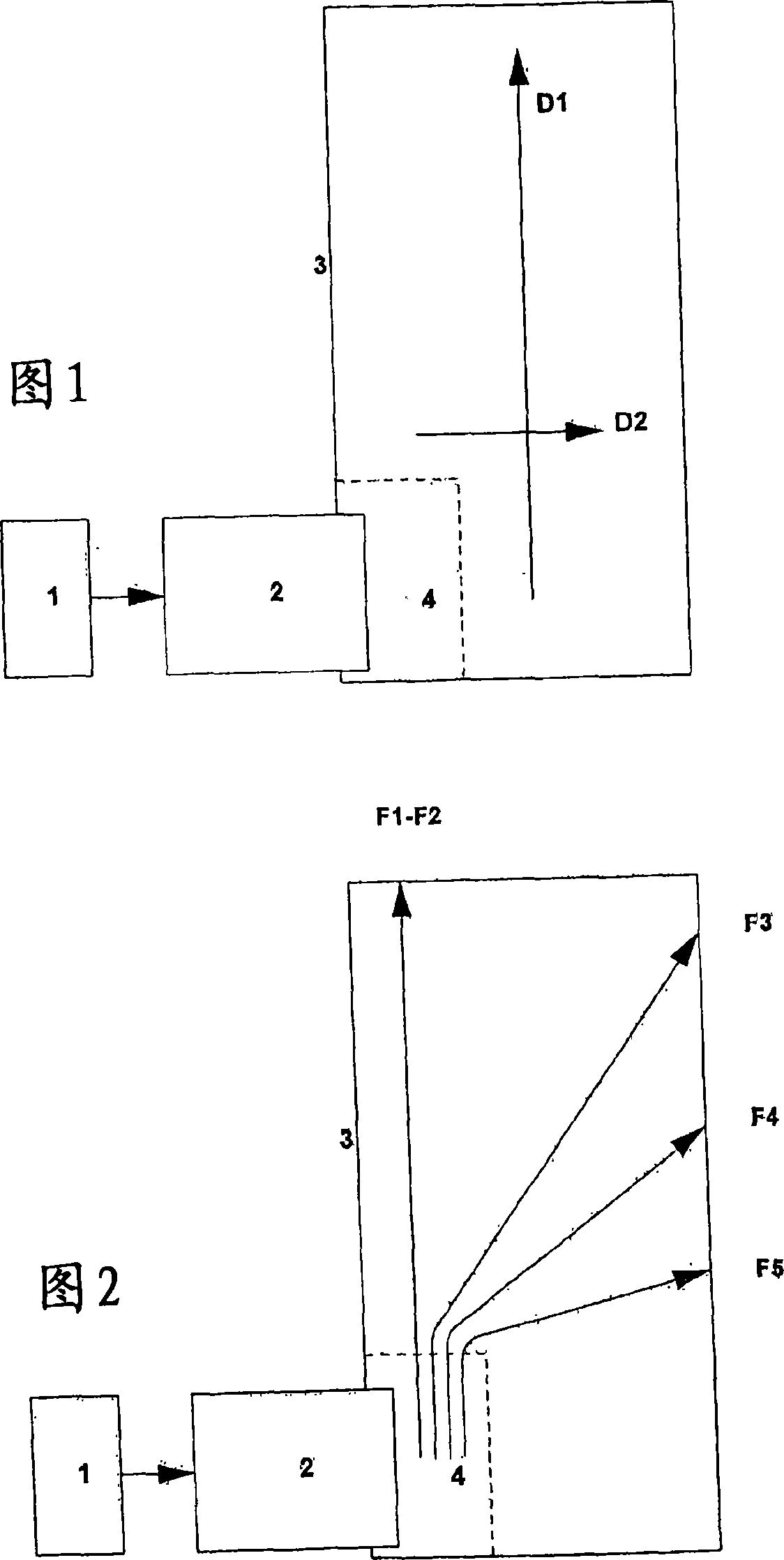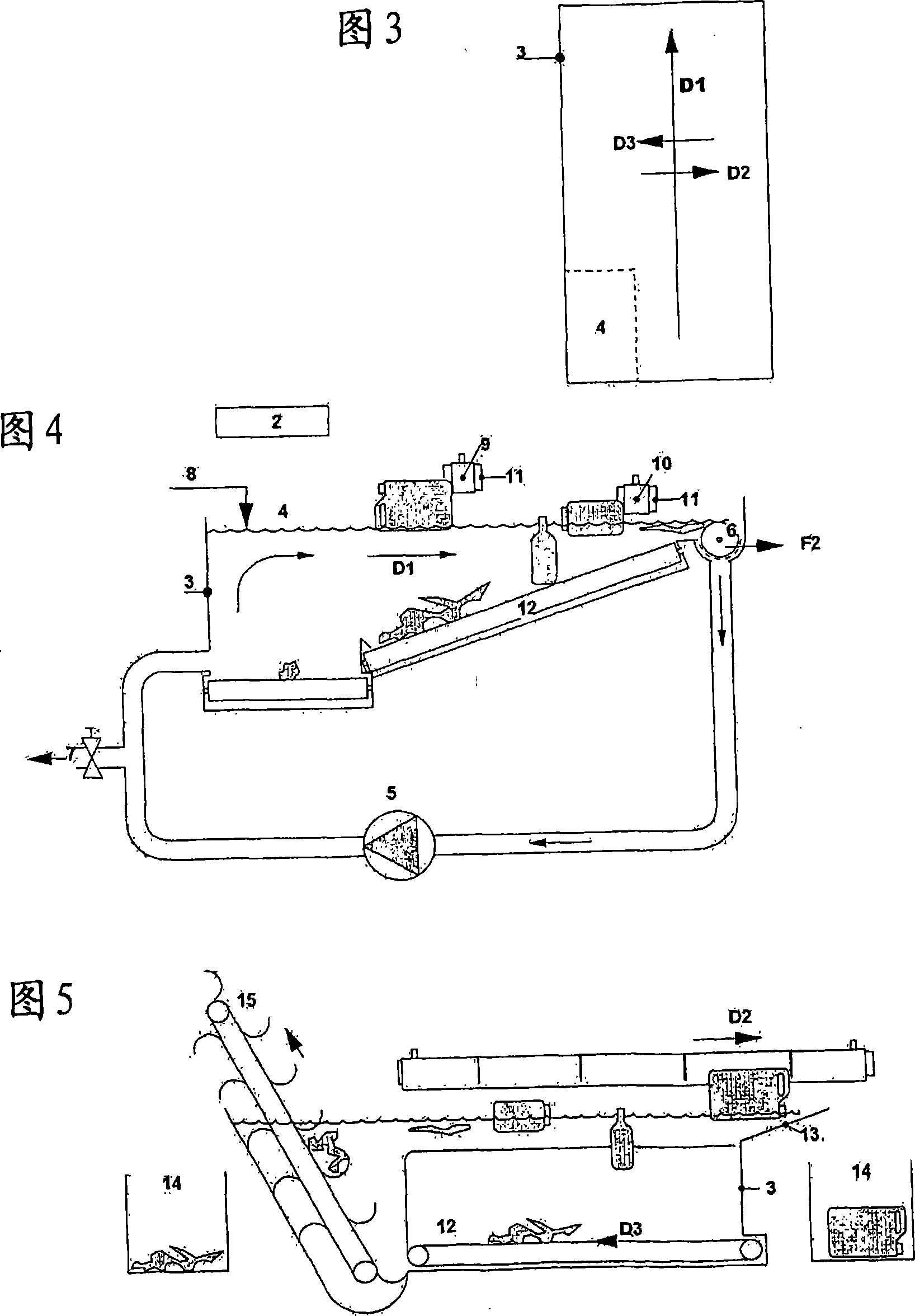A method for separation of heterogeneous products, including household waste
A waste and article technology, applied in the field of separation of mixed articles, can solve the problem of not providing additional costs for water treatment, and achieve the effect of improving energy efficiency and reducing incineration costs
- Summary
- Abstract
- Description
- Claims
- Application Information
AI Technical Summary
Problems solved by technology
Method used
Image
Examples
Embodiment Construction
[0066] figure 1
[0067] If the miscellaneous items or some of them are contained in a bag or bag, they should preferably be released without causing damage to component 1 . Then, on the conveyor 2 a smooth flow of items is produced. The miscellaneous items are poured into the separation container 3, and liquid flows in the separation container 3. The articles fall into the feed zone 4, where all components are subjected to a force P1 in direction D1 generated by the liquid flow.
[0068] The components F0, which are subjected to a greater force of gravity than buoyancy, sink to a collection area directly below or near the feed zone 4, where they are withdrawn by known means.
[0069] Some components (F3-F5) floated, some of which were above the surface. Here, this part of the composition is acted upon by a force P2 in direction D2.
[0070] In Figure 1, P2 is provided by an air stream or a liquid jet.
[0071] figure 2
[0072] Simultaneously providing a force P1 in the...
PUM
 Login to View More
Login to View More Abstract
Description
Claims
Application Information
 Login to View More
Login to View More - R&D
- Intellectual Property
- Life Sciences
- Materials
- Tech Scout
- Unparalleled Data Quality
- Higher Quality Content
- 60% Fewer Hallucinations
Browse by: Latest US Patents, China's latest patents, Technical Efficacy Thesaurus, Application Domain, Technology Topic, Popular Technical Reports.
© 2025 PatSnap. All rights reserved.Legal|Privacy policy|Modern Slavery Act Transparency Statement|Sitemap|About US| Contact US: help@patsnap.com


